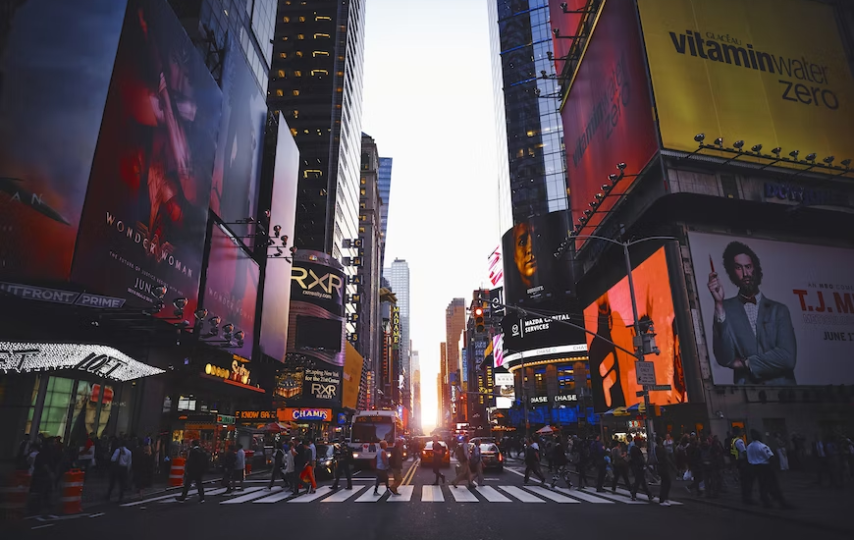Anywhere you look, you’ll see signs everywhere that provide crucial details about businesses to people. Signs can be used for a variety of things, from promoting an item to giving instructions to the washroom. Brands put time and effort into choosing the most ideal business signs to help them reach specific goals for their company. In the past, the only possibilities were conventional hard-copy signs like posters, banners, stickers, and vinyl graphics. With the rise of digital signage, options have grown in the modern world.
Businesses now have more options for connecting with their target audience through a rolling screen thanks to digital signage from risevision.com. Printed signage can still be useful even when digital business signs are more advantageous. A print sign can be more suitable in some instances than a digital sign, and vice versa. This article will help you in weighing the positive and negative aspects of digital signs versus conventional signs so you can pick a strategy that will best assist you in achieving your goals.
TRADITIONAL VS. DIGITAL SIGNAGE
Businesses use signage to promote their brands, give any information, or just for décor. The optimum design will depend on a number of factors, including the sign’s specific use, size, and placement. You may choose the ideal signs for your company by taking into account these factors.
1. Goal
One of the most crucial factors to take into account when deciding whether to use an electronic or print form of a sign is its intended use. A standard poster is an easy solution if you need a sign to identify the conference rooms at work. But, a digital display might be more practical for showcasing a diner’s daily deals. Sometimes both options seem like a good idea, while other times the ideal choice may not be obvious. To aid you in choosing the ideal sign, first, identify its purpose. After that, take into account the other factors.
2. Space
The doors of an elevator as well as the side of a building can have signs wrapped around them. The size of the place where the sign will be positioned will be a contributing factor to whether you pick a digital or print sign.
Printed signs can be made in various forms and sizes to make the most of almost any space. Digital signs are also available in a variety of widths and lengths, but because they are frequently shaped as rectangles, they are significantly less adaptable. While digital signs are more appropriate for flat surfaces and wide places, conventional signs can be looped around oddly shaped spaces. Choose one sign that will look well in your location and have the most impact.
3. Location
While selecting a sign, location is equally as crucial to take into account as area size. You can use both digital and printed signs indoors and outdoors, but other factors about the place will help you choose the best one.
Is power widely accessible? Although very attractive, digital signage needs electrical power to operate. In the modern developing world, it is easy to get electricity to operate a digital sign. A printed sign may, however, be more suitable in some circumstances. A branded tent may make a difference from off the grid if you’re selling your products at an event in an open area without access to power energy.
4. Quality
Aside from the screen itself, effective digital signage requires a number of other elements, such as Wi-Fi access and an updated content management system. An eye-catching digital display’s power systems may break down, resulting in the sign’s failure to operate temporarily. If your digital sign requires maintenance or sign repair, it can cause interruptions in your marketing efforts and may result in lost revenue. Ensuring that your digital sign operates without a hitch around the clock can be made easier by knowing how to use technology.
Conventional signage offers the most dependable solution because of its simple design. High-quality printed signage can serve you for decades or till you choose to remove it when properly installed.
5. Price
Any marketing strategy must take into account prices as a vital factor. Signage is an expensive investment, and finding the appropriate design can help you achieve it with a limited budget.
For the majority of projects, a bigger initial investment is needed to pay for a digital sign. But as soon as digital signage is installed, it can display commercials, updates about future events, special announcements, and other crucial communications for many years after installation. Digital signage can eventually reduce the cost of advertising for your company.
Print signs are inexpensive and need little to no maintenance, but they might be expensive if you change them regularly. You will require new signs if you rebrand or launch an innovative new item. Considering how you utilize print displays, changing them can add costs over time.
6. Flexibility
Digital signage is very flexible. Literally, anything can be shown on the screen, and you’re able to change it at any time. You can change the images every day to let people know about your best sellers. You can immediately update an ad if it isn’t delivering the intended results. With digital signs, there are infinite possibilities to interact with customers. Even interactive experiences can be created using touchscreen devices.
Traditional printed signs are more appropriate for long-term or permanently displayed messages because they are static. Nonetheless, they are very adaptable due to their mobility. Trade fair displays, foldable banner stands, step-and-repeat posters, as well as other printed signage are lightweight and reusable at a huge number of events.








